When it came to selecting a 500 sized reel for ultra lightweight lure fishing, the Mitchell Mag Pro range was at the top of the list to check out. I have used the Mitchell Mag pro reel range quite a lot in the last couple of years in the larger 2000 size (See my review), and they have stood the test of time and served me well.
Rather than writing 2 separate reviews, I will combine the review of the Extreme and Lite reels into this single review. There will be lots of pictures and technical specifications, but I want to concentrate on the performance of the reels when used for real catching some proper fish !
Mitchell Mag Pro Lite 500
The Michell Mag Pro Lite is the cheaper of the 2 reels, but in terms of performance, there is not much to choose between them.

This is what the official advertising blurb says about the Mag Pro Lite 500…
These amazing reels are the result of a joint development with our Japanese engineering team. You can tell because the they look fantastic and are produced to the highest specification and quality possible. These reels have a magnesium construction that is both lightweight and strong. In addition they are fully saltwater resistant and have been field tested in some of the harshest environments possible.
- 9+1 HPCR ball bearings
- Lightweight magnesium body and rotor
- Double anodized machined aluminium spool with holes
- Super Smooth and sealed Front drag system
- Convertible right / left hand retrieve
- Anti-twist titanium line roller
- Supplied with Neoprene bag
- Instant anti-reverse
- Aluminium spare spool
The specific specification of the Mitchell Mag Pro Lite 500 reel is shown below…
Ratio/retrieve : 6.2:1
Bearings: 9+1
Capacity: Braid 0,18mm/130m , Mono 200/.20mm
Weight:: 199g
Spare Spool : Yes, aluminium shallow spool
This is what you get…
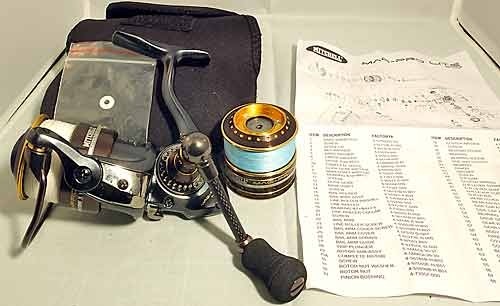
Its good to see that you get a spare spool, as many of the smaller reels do not include this as standard. The washer, shown in the image above is for line profiling. It can be added to the spindle to change the profile of the line when you load it on to the spool. The other thing which I liked was the neoprene reel case – again, this is a step above the standard nylon pouch which most manufacturers supply.
Onto the reel itself…
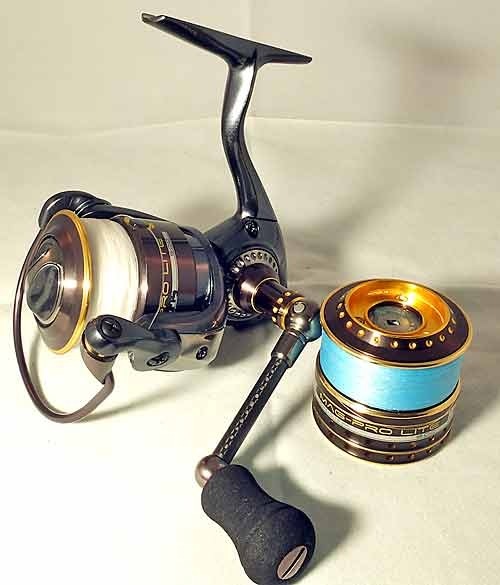
(Note that I have filled both spools with braid – and the spool being used on the reel is the spare shallow spool which is not vented).
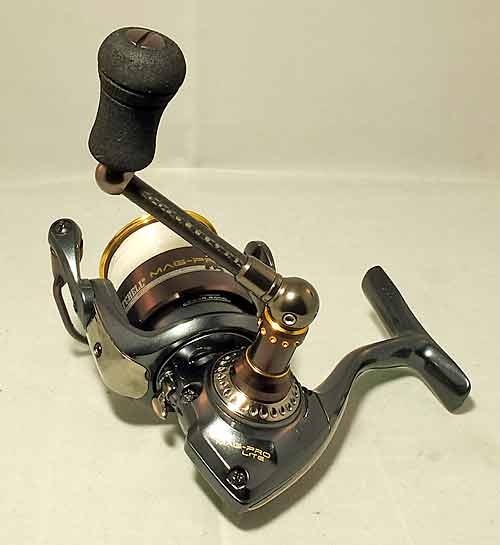
The reel is very light, under 200g, but despite this, it is well built and solid. The low weight is mainly attributed to the fact that the body is made of lightweight magnesium alloy. When I first took the reel out of the box and assembled it, the reel handle did not appear to be at the correct angle – difficult to explain, but when you turned the handle, it felt out of kilter. This was easily solved by using a little manual intervention (!!!) and bending it slightly ! The handle itself is very smart – the shaft is made of carbon (bonus points… ahhhh, carbon !!!) and the handle is made of soft duplon and is not too big. The handle can be swapped to be left or right hand wind. Underneath the reel is the standard anti reverse switch.
Its also worth noting that the reel is easy to maintain – there are a couple of screws which when undone, gain easy access to the guts of the reel. Inside, there are 10 sealed bearings which the spec states are corrosion resistant (HPCR).
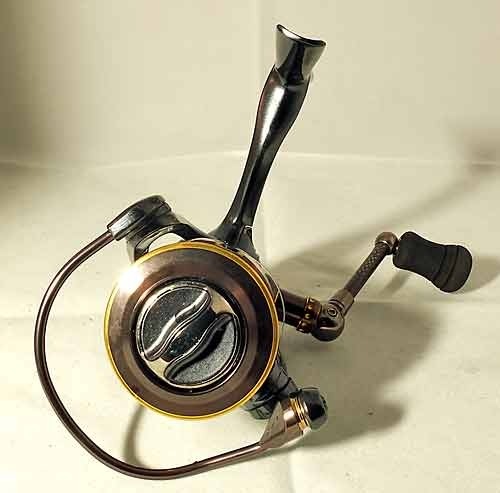
On to the front of the reel. The drag is smooth and quite strong for a reel of this size. The drag is also sealed (another plus when using the reel in saltwater). The anti twist line roller is made of titanium (more bonus points…. titanium, nice !!!!!). The bale arm is positive without being too stiff (I tend to manually flip the bail arm over, especially when using braid).

…Looking at the other side of the reel, everything is in its place. Moving on to the spool…
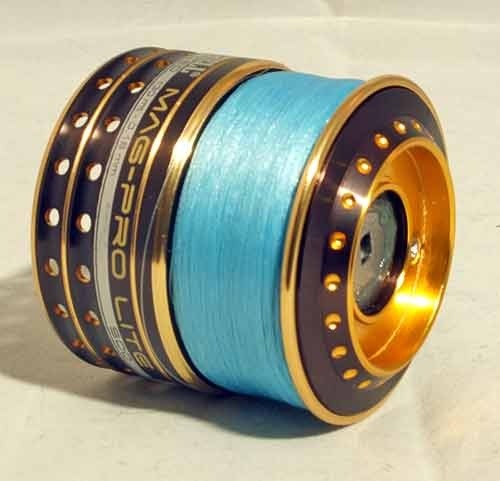
…Very flashy ! The spool is very light – I suspect that this is helped by the fact that it has vented holes drilled into the sides. 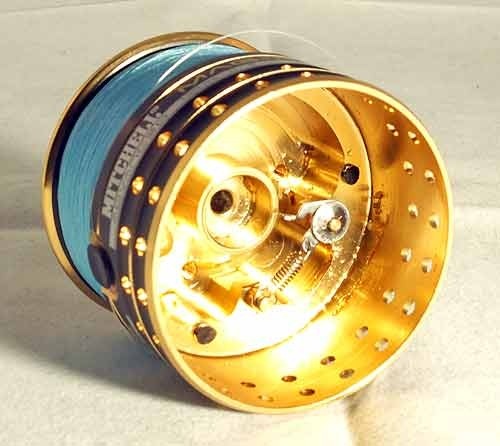
The spool is solid and looks well engineered, and the line clip is positive. When under test, my team mate, did find that the drag stopped clicking when line was being taken from the spool – I suspected that this may have been down to the prawl which can be seen in the image above. It seemed to sort itself out, and it didn’t affect the drag whatsoever, so again, purely cosmetic in my book ![]()
That’s about it, in terms of looks and specification – the reel review for me, can be read below, when the reel gets a proper work-out, so please read-on, or scroll to the bottom of the page.
Mitchell Mag Pro Extreme 500
In terms of size, the Mitchell Mag Pro Extreme 500 is almost identical to the Mag Pro Lite 500. However, there are alot of minor differences in the specification of the two reels, which we will examine below.
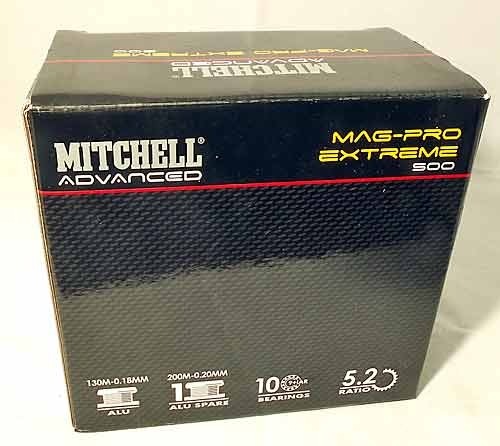
This is what the advertising blurb says about the Pro Extreme range of reels…
This series is Flag ship of the Mitchell Advanced reels. As with the super successful Mag-Pro Lite reels these reels where produced in conjunction with our Japanease engineering team. They are produced using the maximum technology and specification our factory has available. Amazingly our engineers have managed to further reduce the weight of these reels in comparison to the Mag Pro Lite. This achieved by utilising a lighter weight Carbon / Aluminium hybrid spool, Titanium Mainshaft and ultra lightweight magnesium body, rotor and sideplate. However the strength and performance is not comparamised due to this reduction in weight, indeed during testing these stunning reels have proved as durable and reliable as all the reels in the Mitchell Advanced series.
- 9+1 Stainless Steel Ball Bearings-included in this total are 3XCR, they are shielded bearings used in critical places (Main Shaft and Pinion Gear)
- Lightweight double anodized aluminium spool with carbon arbor
- Spare Aluminium Spool
- Solid Aluminium Bail Wire
- Titanium Anti-twist line roller
- Lightweight Carbon Handle / EVA Handle knob
- Sealed Carbon Drag System
- Spring loaded line clip
- All Water Protected
The technical specification of the Mag-Pro Extreme 500 reel is shown below…
Ratio: 5.2:1
Bearings: 9+1
Capacity: Braid 0.18mm 130m/Mono 200m of 0.2mm
Weight: 179g
Spare Spool : Yes, aluminium shallow spool
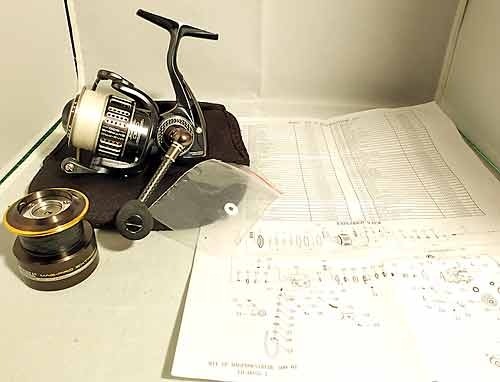
Please excuse the appearance of the spare spool in the images (I had added some mono backing and some insulation tape ready to fill the spare spool full of braid !).
The first things you notice about the reel, are its weight – its incredibly light (179g !!!!!!); and then its looks; it is visually quite striking, stunning I think. I think this is down to the materials used (lots of carbon).
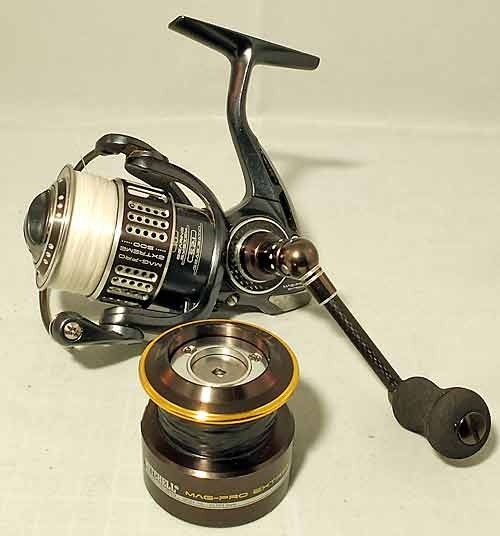
As with the Pro lite, the handle on the Pro Extreme is really well crafted. The shaft is made of lightweight carbon, and not only does it look good, but it feels good too.
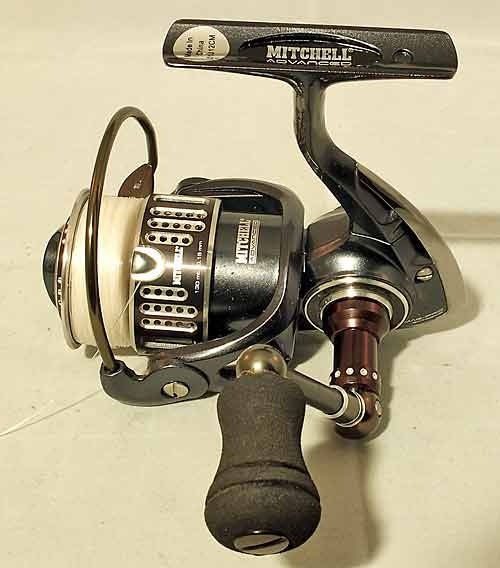
Access to the guts of the reel is a doddle, which is always a real plus for maintenance. Inside the lightweight magnesium body is a titanium main shaft – another upgrade over the Pro Lite. Moving on to the front of the reel…

The spool has a sealed carbon drag system – it is very smooth, and felt slightly more powerful than the drag on the Pro Lite. Although on a reel of this size, the power is really never going to be an issue – the sensitivity is far more important, and in this regard, the Pro Extreme excelled.
The spool is a work of art. Again, its incredibly light – a combination of the materials and venting. The main spool uses a hybrid construction which combines carbon and aluminium – all I can say is that it works !
The anti twist line roller is positive and functional – and made from top drawer material – Titanium – very nice.
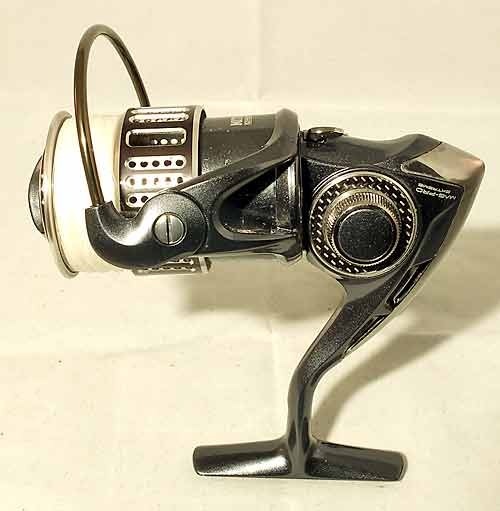
Moving on to the other side of the reel. The body/side plates are very solid. The Handle can be easily switched from left to right-hand wind. On the cap for the handle there is some carbon highlighting – as far as I can see, this is purely cosmetic – a bit pointless, but it does look good !
Moving on to the spare spool…
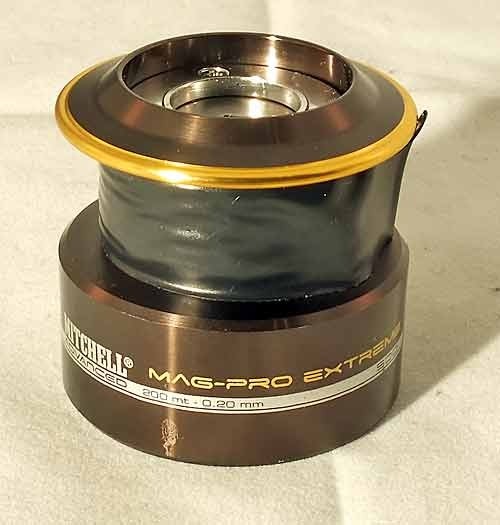
Again, apologies for the insulation tape on the spool (I was loading it with backing). The appearance and materials used in the construction of the spare spool are different to those used on the main spool. The spare spool is heavier and does not include the carbon. This is a bit of a disappointment, but then again, many smaller reels do not include a spare spool at all, so for that we should be thankful.
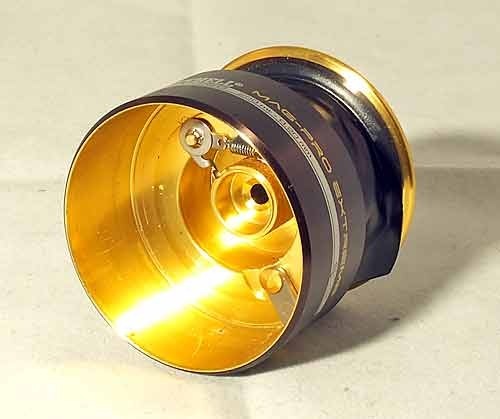
That concludes the technical review of the Mithcell Mag Pro 500. The most important part of the review, is how the reel behaves, and how it stands up to the rigours of tough fishing, especially in a saltwater environment. To see how the reels got on, please read the section below…
Testing
It all about the testing. The specifications, materials, construction and looks of the reel are all very well, but what every serious fisherman wants to know, is “How does the reel behave on the water ?”. Well I was lucky enough to be able to take the reels to Australia in the Autumn of 2013 and give them a seriously good work-out. The results of the test are shown below…
The first week was spent in Victoria taking part in the 3rd Hobie World Kayak Fishing Championships. We fished two venues: Bemm River and Marlo. The competition was lure only, and the aim was to weigh in the 3 biggest bream each day. Bream are one of the most difficult fish to catch on a lure. So we had to scale down our tackle (3 lb flouro leaders and 3 lb braid mainline and rods rated to cast 0.5 to 5g !!!). I fished using a combination of soft plastics and small. I managed to catch lots of fish, but not many bream, and no big ones. In terms of this review, it matters not, the real; the initial test turned out out be the conditions – wind, rain, waves and saltwater…
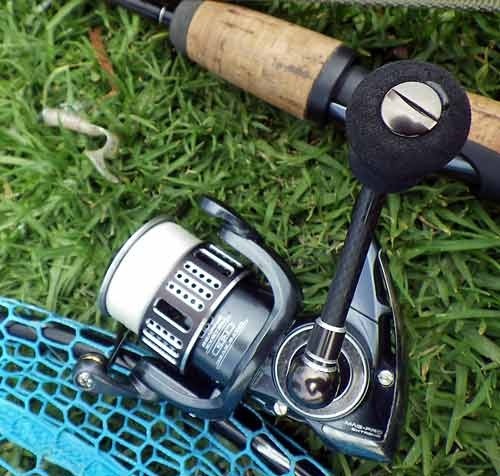
The Mag Pro Extreme, was mainly used fishing small soft plastic lures (z-man 2 and 2.5 inch grubs).
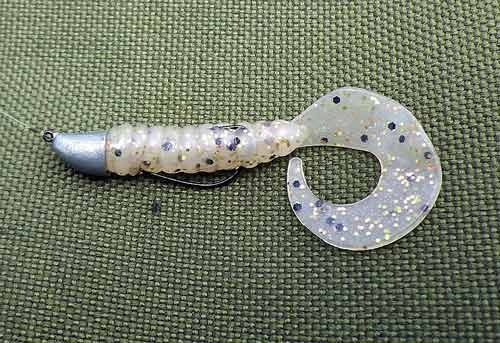
The Mag Pro Lite was used mainly with hardbaits..
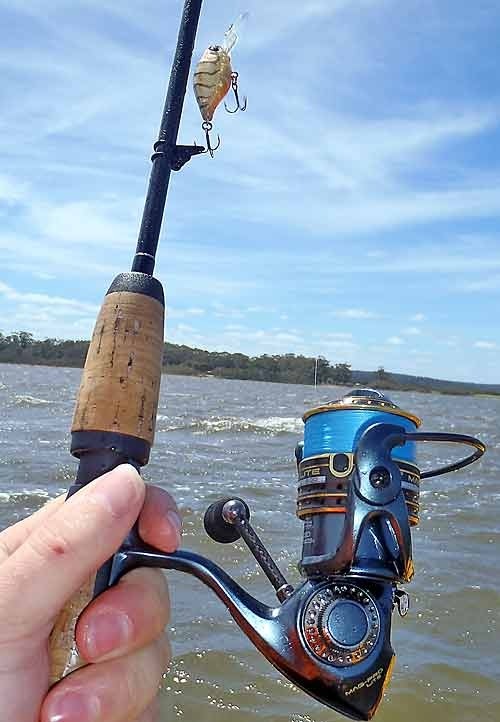
You can see some of the conditions we fished in from the image above. This was in a saltwater estuary, and the spray was covering the reels with every wave that came over the bow.
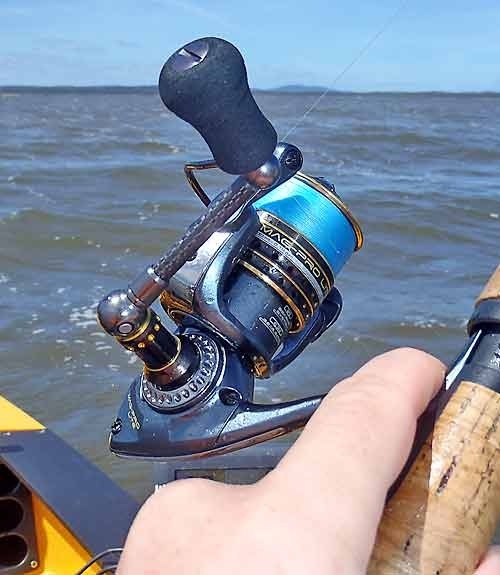
The reels performed well, and survived the conditions. I managed to catch flathead, bream, tailor, estuary perch and even a puffer fish. So the reels coped with the conditions well, but fish of that size were never really going to trouble reels in this price range. What I needed now, were some “Proper Aussie Fish” to make the reels sing….
Luckily, we had a second week of kayak fishing booked in a location called Mornington near Melbourne on the shore of Port Phillip Bay. Before we left the UK, I had done a bit of homework, and had read about a run of red snapper which seemed to peak at Port Phillip Bay around the time when we were visiting.
We were lucky enough to be helped out by some of the best kayak fishermen I have ever had the pleasure of fishing with… Matt Petrie, Scott Baker and Scott Lovig – all of whom had kayak fished for the winning Australian team in the Hobie Worlds event the week before. Matt Petrie is a kayak fishing guide who knows the Mornington area like the back of his hand. He offered to take myself and David Morris out in the Hobie kayaks to try for some red snapper. My homework had suggested that we would need beefed-up tackle for the snapper – they fight hard, and both myself and David had brought heavier rods and reels for just such a trip. However, Matt had told us that he used standard ultra light bream gear (with a heavier leader) when lure fishing for the snapper. We were a bit sceptical at first… but Matt’s advice proved to be spot-on as you will read. He took us out on the kayaks and dropped us right on the spot. The late afternoon sun was shining and we were drifting in about 6m of water. My Mithcell reels were matched to a 6 foot Greys g-lite spin rated for 5g. I was using 4kg braided mainline and a TT lures 1/8 oz. jig head. Scott Baker had told us to take Berkely Gulp lures in 4 inch lengths – in colours watermelon pearl and nuclear chicken (!!!).

We started to drift, and straight away I had a bite. I reeled in, only to find that something had cut the gulp lure clean in half; Matt reckoned the culprit was probably a squid. Second drift, I was harldy working the lure at all, just occasional small slow lifts, when all of a sudden BANG – a fish hit the lure and tore off with it. Now bear in mind that we are using quite light gear – I was shocked by the speed and power of the fish using this gear. I really was amazing to see the rod bent double, with the tip below the water, whilst line fizzed off the reel at quite an alarming rate. The reel was holding its own, but I was feeling nervous that maybe I was going to be outgunned on this lite gear. In all honesty, for the first minute or two, it was as much as I could do, just to hang-on and try to slow the fish down. After a few minutes,the fish slowed down and started shaking its head. I started to regain the line I lost and tightened up the drag on the reel to try to gain an upper hand. Matt had seen the huge grin on my face and paddled over to offer some assistance and take some pictures. The fish appeared about 10 feet below the kayak in the clear water. It still wasn’t finished, and as I tried to net it, it dived again, taking a load more line against the clutch. Finally I managed to net it. By Aussie standards, it was probably a very average fish, but for me, on the gear I was using, I explained to Matt, that it fought like a “Bream on steroids !”.
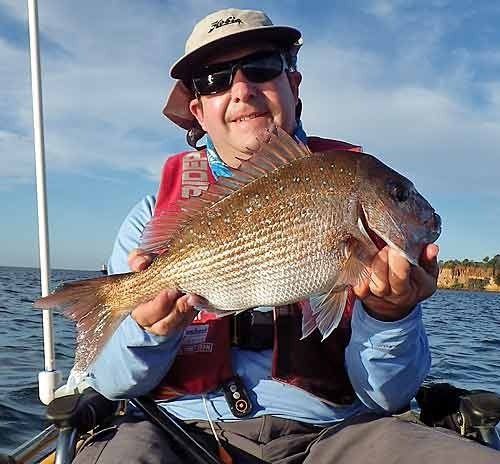
More drifts and more fish. David was catching, and Matt was showing us both how it should be done.
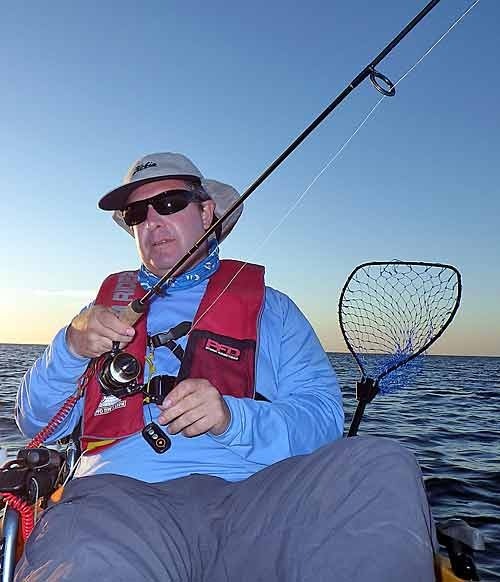
More drifts produced more bites, but they were not easy to hit. I managed another couple of fish as the light started to fade.

I switched lure colour to the nuclear chicken which seemed to do the trick…
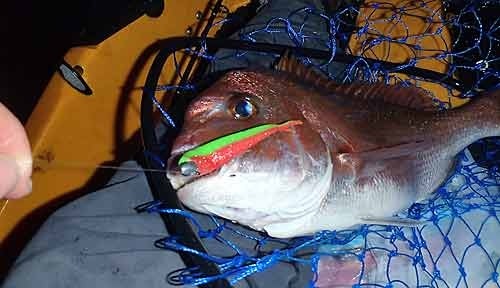
As the sun slowly set, it made a fantastic backdrop to what had been a magical few hours on the water in the company a a couple of great friends.
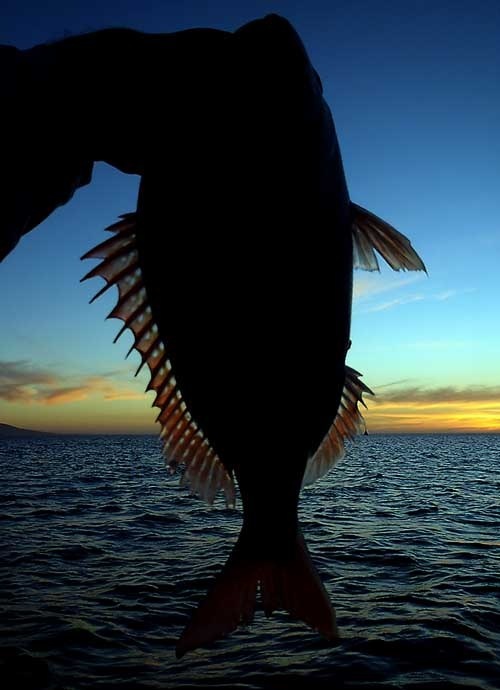
We thanked Matt, and made our way back to the hotel. A few days later, we were lucky enough to be invited out on Scott Baker’s boat. This gave us another chance to test out the reels. This time we had a go at squid fishing.
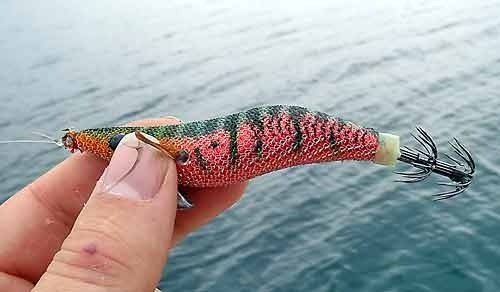
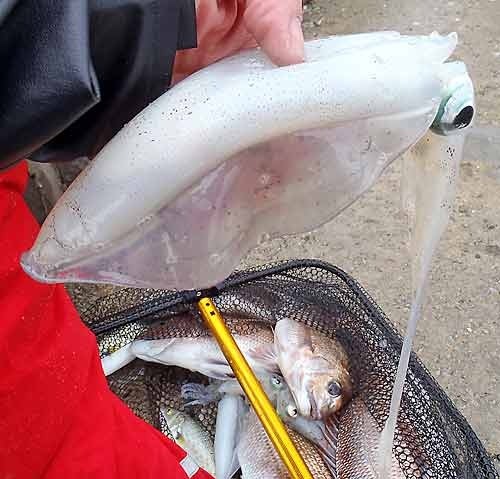
… and also caught a good selection of other fish, including more snapper for Scott and David and also some salmon…

A video of the red snapper testing the mitchell mag pro lite to the max…
Conclusions
We couldn’t have hoped for a better test for the Michell Mag Pro 500 extreme/lite reels, the first week had provided difficult conditions which definitely showed the reels ability to withstand saltwater abuse. And the second week showed just what these tiny little reels are capable of, when faced with hard fighting red snapper on light tackle. I have used the larger Mag Pro reels before in the UK, so I know that they are good, but even I was impressed with the way they coped with the red snapper in the kayak. They soaked up alot of abuse, and never once did they let me down. Even writing this review I still have a very big grin on my face when I think about the snapper tearing off line and the clutch screaming – that is what fishing is all about, right ?
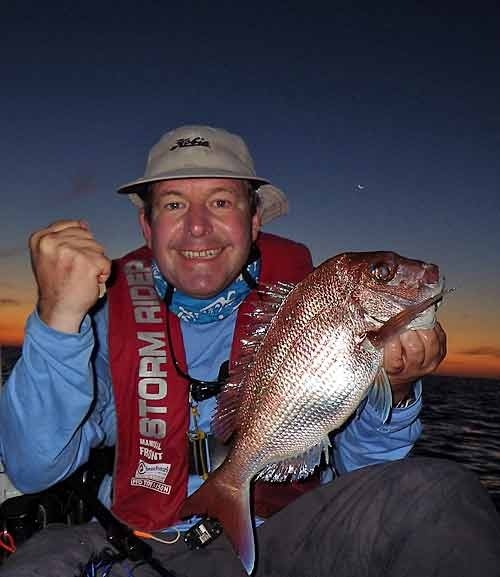
In terms of the differences between the two reels, the Pro Extreme has a lower gear ratio, and is lighter. But then its more expensive too. I suppose you pays your money and takes your choice. I would be happy using either reel.
